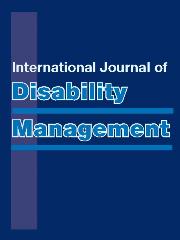Article contents
Australian Employee Perspectives on Disability Management in Relation to Job Satisfaction, Physical and Mental Health, Workplace Morale and Reduced Sickness Absence
Published online by Cambridge University Press: 20 October 2016
Abstract
Disability management is now recognised as an effective means of managing the increasing global costs of injury and disability. However, research on disability management particularly employee perceptions of its value, are sparse. This paper reports on the Australian findings of a large international project that included Canada, China, Switzerland and Australia, which examined employee perspectives of disability management related to job satisfaction, physical and mental health, workplace morale and reduced sickness absence. Data was collected from 365 employees in 10 large private and public companies using an online survey tool that focused on three components of a disability management program — disability prevention (DP), stay at work (SAW) and return to work (RTW) programs — in relation to the dependent variables of job satisfaction, physical and mental health, workplace morale, sickness absence. Multivariate regression was used to predict disability management's influence on the dependent variables. Results demonstrated positive perceptions regarding the perceived benefits of disability management to both individual employees and their perceptions of coworkers. It was apparent that each component of a disability management program (DP, SAW, and RTW) is positively related to job satisfaction, physical and mental health, workplace morale and reduced sickness absence Disability management programs were perceived as more beneficial in private, as opposed to public, workplaces; however, no differences were evident according to union status or gender of the respondent. It is possible disability management may impact on organisational productivity via variables associated with workplace culture, as well as through the direct benefits flowing from preventing and managing injury. Given the significant costs associated with absenteeism, an outcome of interest to many employers was the finding that employees perceived SAW programs as the most beneficial in terms of reducing absenteeism for both themselves and their coworkers.
- Type
- Articles
- Information
- Copyright
- Copyright © The Author(s) 2016
References
- 3
- Cited by


